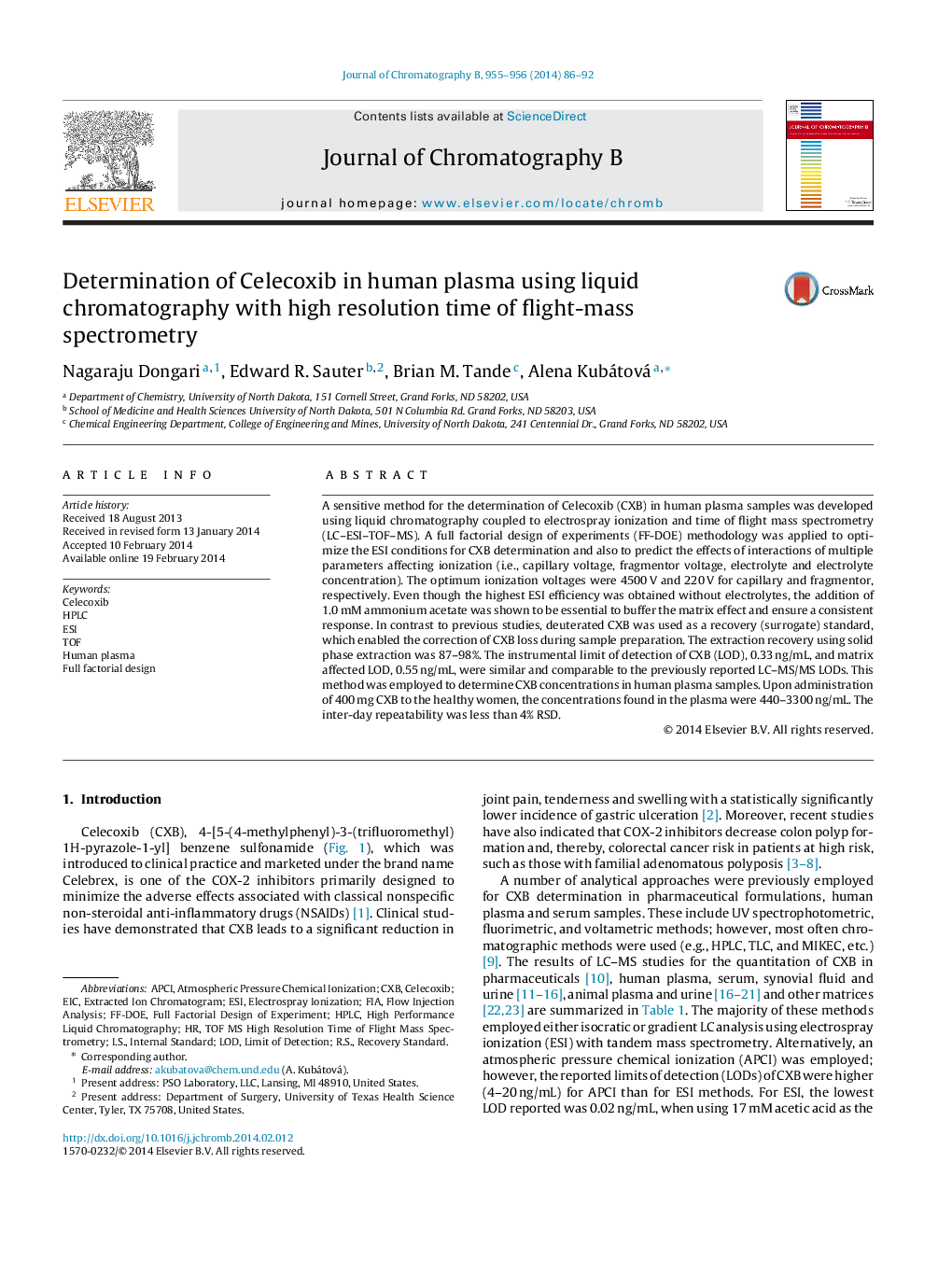| Article ID | Journal | Published Year | Pages | File Type |
|---|---|---|---|---|
| 1216100 | Journal of Chromatography B | 2014 | 7 Pages |
•The LC–ESI–TOF–MS method was developed for analysis of celecoxib in human plasma.•Full factorial experimental design of ESI showed the no-electrolyte option as optimal.•To compensate for matrix effect, 1.0 mM ammonium acetate was essential for ESI.•The LOD in human plasma samples was 0.55 ng/mL, i.e., similar to that of LC–MS/MS.
A sensitive method for the determination of Celecoxib (CXB) in human plasma samples was developed using liquid chromatography coupled to electrospray ionization and time of flight mass spectrometry (LC–ESI–TOF–MS). A full factorial design of experiments (FF-DOE) methodology was applied to optimize the ESI conditions for CXB determination and also to predict the effects of interactions of multiple parameters affecting ionization (i.e., capillary voltage, fragmentor voltage, electrolyte and electrolyte concentration). The optimum ionization voltages were 4500 V and 220 V for capillary and fragmentor, respectively. Even though the highest ESI efficiency was obtained without electrolytes, the addition of 1.0 mM ammonium acetate was shown to be essential to buffer the matrix effect and ensure a consistent response. In contrast to previous studies, deuterated CXB was used as a recovery (surrogate) standard, which enabled the correction of CXB loss during sample preparation. The extraction recovery using solid phase extraction was 87–98%. The instrumental limit of detection of CXB (LOD), 0.33 ng/mL, and matrix affected LOD, 0.55 ng/mL, were similar and comparable to the previously reported LC–MS/MS LODs. This method was employed to determine CXB concentrations in human plasma samples. Upon administration of 400 mg CXB to the healthy women, the concentrations found in the plasma were 440–3300 ng/mL. The inter-day repeatability was less than 4% RSD.
